 |
Expert Systems |
| << Knowledge Representation and Reasoning |
| Handling uncertainty with fuzzy systems >> |

Artificial
Intelligence (CS607)
Unit
preference: prefer using a
clause with one literal.
Produces shorter
�
clauses
Set of
support: Try to involve the
thing you are trying to
prove. Chose a
�
resolution
involving the negated goal.
These are relevant clauses.
We
move
`towards solution'
Lecture No.
18-28
5 Expert
Systems
Expert
Systems (ES) are a popular
and useful application area in AI.
Having
studied
KRR, it is instructive to study ES to
see a practical manifestation of
the
principles
learnt there.
5.1 What is an
Expert?
Before we
attempt to define an expert
system, we have look at what
we take the
term
`expert' to mean when we
refer to human experts. Some
traits that
characterize
experts are:
They
possess specialized knowledge in a
certain area
�
They
possess experience in the
given area
�
They
can provide, upon
elicitation, an explanation of their
decisions
�
The
have a skill set that
enables them to translate
the specialized
�
knowledge
gained through experience
into solutions.
Try to
think of the various traits
you associate with experts you
might know, e.g.
skin
specialist, heart specialist,
car mechanic, architect,
software designer. You
will
see that the underlying
common factors are similar
to those outlined
above.
5.2 What is an
expert system?
According to
Durkin, an expert system is "A
computer program designed to
model
the
problem solving ability of a
human expert". With the
above discussion of
experts in
mind, the aspects of human
experts that expert systems
model are the
experts:
Knowledge
�
Reasoning
�
5.3
History and Evolution
Before we
begin to study development of
expert systems, let us get
some
historical
perspective about the
earliest practical AI systems.
After the so-called
dark
ages in AI, expert systems
were at the forefront of
rebirth of AI. There was
a
realization in
the late 60's that
the general framework of
problem solving was
not
111

Artificial
Intelligence (CS607)
enough to
solve all kinds of problem.
This was augmented by the
realization that
specialized
knowledge is a very important
component of practical
systems.
People
observed that systems that
were designed for
well-focused problems and
domains
out performed more `general'
systems. These observations
provided the
motivation
for expert systems. Expert
systems are important
historically as the
earliest AI
systems and the most
used systems practically. To
highlight the utility
of expert
systems, we will look at
some famous expert systems,
which served to
define
the paradigms for the
current expert
systems.
5.3.1 Dendral
(1960's)
Dendral
was one of the pioneering
expert systems. It was
developed at Stanford
for NASA to
perform chemical analysis of
Martian soil for space
missions. Given
mass
spectral data, the problem
was to determine molecular
structure. In the
laboratory,
the `generate and test'
method was used; possible
hypothesis about
molecular
structures were generated
and tested by matching to
actual data.
There
was an early realization
that experts use certain
heuristics to rule
out
certain
options when looking at
possible structures. It seemed
like a good idea to
encode
that knowledge in a software
system. The result was the
program
Dendral,
which gained a lot of
acclaim and most importantly
provided the
important
distinction that Durkin
describes as: `Intelligent
behavior is dependent,
not so
much on the methods of
reasoning, but on the
knowledge one has to
reason
with'.
5.3.2 MYCIN (mid
70s)
MYCIN was
developed at Stanford to aid
physicians in diagnosing and
treating
patients
with a particular blood
disease. The motivation for
building MYCIN was
that
there were few experts of
that disease, they also
had availability
constraints.
Immediate
expertise was often needed
because they were dealing
with a life-
threatening
condition. MYCIN was tested in
1982. Its diagnosis on ten
selected
cases
was obtained, along with
the diagnosis of a panel of
human experts.
MYCIN compositely
scored higher than human
experts!
MYCIN was an
important system in the
history of AI because it demonstrated
that
expert
systems could be used for
solving practical problems. It
was pioneering
work on
the structure of ES (separate
knowledge and control), as opposed
to
Dendral, MYCIN
used the same structure
that is now formalized for
expert
systems.
5.3.3
R1/XCON (late 70's)
R1/XCON is
also amongst the most
cited expert systems. It was
developed by
DEC
(Digital Equipment Corporation), as a
computer configuration assistant.
It
was
one of the most successful
expert systems in routine
use, bringing an
estimated
saving of $25million per
year to DEC. It is a classical
example of how
an ES can
increase productivity of organization, by
assisting existing
experts.
5.4 Comparison of
a human expert and an expert system
112
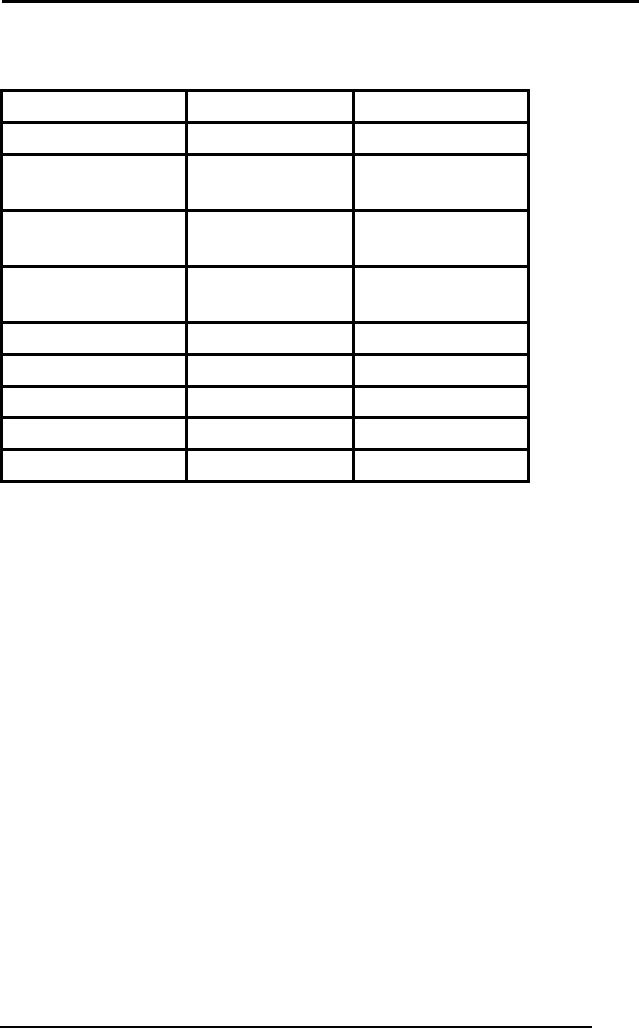
Artificial
Intelligence (CS607)
The following
table compares human experts
to expert systems. While
looking at
these,
consider some examples, e.g.
doctor, weather
expert.
Issues
Human
Expert
Expert
System
Availability
Limited
Always
Geographic
location
Locally
available
Anywhere
Safety
considerations
Irreplaceable
Can be
replaced
Durability
Depends
on
Non-perishable
individual
Performance
Variable
High
Speed
Variable
High
Cost
High
Low
Learning
Ability
Variable/High
Low
Explanation
Variable
Exact
5.5
Roles of an expert system
An expert
system may take two main
roles, relative to the human
expert. It may
replace
the expert or assist the
expert
Replacement of
expert
This
proposition raises many
eyebrows. It is not very
practical in some
situations,
but
feasible in others. Consider
drastic situations where
safety or location is an
issue,
e.g. a mission to Mars. In
such cases replacement of an
expert may be the
only
feasible option. Also, in
cases where an expert cannot
be available at a
particular
geographical location e.g.
volcanic areas, it is expedient to
use an
expert
system as a substitute.
An example of
this role is a France based
oil exploration company that
maintains
a number of
oil wells. They had a
problem that the drills
would occasionally
become
stuck. This typically occurs
when the drill hits
something that prevents
it
from
turning. Often delays due to
this problem cause huge
losses until an
expert
can
arrive at the scene to
investigate. The company decided to
deploy an expert
system so
solve the problem. A system
called `Drilling Advisor'
(Elf-Aquitane
1983)
was developed, which saved
the company from huge
losses that would be
incurred
otherwise.
Assisting
expert
113

Artificial
Intelligence (CS607)
Assisting an
expert is the most commonly
found role of an ES. The
goal is to aid
an expert in a
routine tasks to increase
productivity, or to aid in managing
a
complex
situation by using an expert
system that may itself draw
on experience
of other
(possibly more than one)
individuals. Such an expert
system helps an
expert
overcome shortcomings such as
recalling relevant
information.
XCON is an example
of how an ES can assist an
expert.
5.6 How
are expert systems used?
Expert
systems may be used in a
host of application areas
including diagnosis,
interpretation,
prescription, design, planning,
control, instruction, prediction
and
simulation.
Control
applications
In control
applications, ES are used to
adaptively govern/regulate the
behavior of
a system,
e.g. controlling a manufacturing
process, or medical treatment. The
ES
obtains
data about current system
state, reasons, predicts
future system states
and recommends
(or executes) adjustments
accordingly. An example of such
a
system is VM
(Fagan 1978). This ES is
used to monitor patient
status in the
intensive
care unit. It analyses heart
rate, blood pressure and
breathing
measurements to
adjust the ventilator being
used by the patient.
Design
ES are
used for design applications
to configure objects under
given design
constraints,
e.g. XCON. Such ES often
use non-monotonic reasoning,
because of
implications of
steps on previous steps.
Another example of a design ES
is
PEACE
(Dincbas 1980), which is a CAD
tool to assist in design of
electronic
structures.
Diagnosis and
Prescription
An ES can
serve to identify system
malfunction points. To do this it
must have
knowledge of
possible faults as well as
diagnosis methodology extracted
from
technical
experts, e.g. diagnosis
based on patient's symptoms,
diagnosing
malfunctioning
electronic structures. Most
diagnosis ES have a
prescription
subsystem.
Such systems are usually
interactive, building on user
information to
narrow
down diagnosis.
Instruction and
Simulation
ES may be
used to guide the
instruction of a student in some
topic. Tutoring
applications
include GUIDON (Clancey 1979),
which instructs students
in
diagnosis of
bacterial infections. Its
strategy is to present user
with cases (of
which it
has solution). It then
analyzes the student's
response. It compares
the
students
approach to its own and
directs student based on
differences.
114

Artificial
Intelligence (CS607)
Simulation
ES can be
used to model processes or
systems for operational
study, or for use
along
with tutoring
applications
Interpretation
According to
Durkin, interpretation is `Producing an
understanding of situation
from
given information'. An example of a
system that provides
interpretation is
FXAA (1988).
This ES provides financial
assistance for a commercial
bank. It
looks at a
large number of transactions and
identifies irregularities in
transaction
trends. It
also enables automated
audit.
Planning and
prediction
ES may be
used for planning
applications, e.g. recommending
steps for a robot
to carry
out certain steps, cash
management planning. SMARTPlan is
such a
system, a
strategic market planning
expert (Beeral, 1993). It
suggests
appropriate
marketing strategy required to
achieve economic success.
Similarly,
prediction
systems infer likely
consequences from a given
situation.
Appropriate domains for expert
systems
When
analyzing a particular domain to
see if an expert system may
be useful, the
system
analyst should ask the
following questions:
Can
the problem be effectively
solved by conventional programming?
If
�
not, an ES may be
the choice, because ES are
especially suited to
ill-
structured
problems.
Is the
domain well-bounded? e.g. a
headache diagnosis system
may
�
eventually
have to contain domain
knowledge of many areas of
medicine
because it is
not easy to limit diagnosis
to one area. In such cases
where
the
domain is too wide, building
an ES may be not be a feasible
proposition.
What
are the practical issues
involved? Is some human
expert willing to
�
cooperate? Is
the expert's knowledge
especially uncertain and
heuristic? If
so, ES
may be useful.
5.7 Expert system
structure
Having
discussed the scenarios and
applications in which expert
systems may be
useful,
let us delve into the
structure of expert systems. To
facilitate this, we
use
the
analogy of an expert (say a
doctor) solving a problem. The
expert has the
following:
Focused
area of expertise
�
Specialized
Knowledge (Long-term Memory,
LTM)
�
Case
facts (Short-term Memory,
STM)
�
Reasons
with these to form new
knowledge
�
115
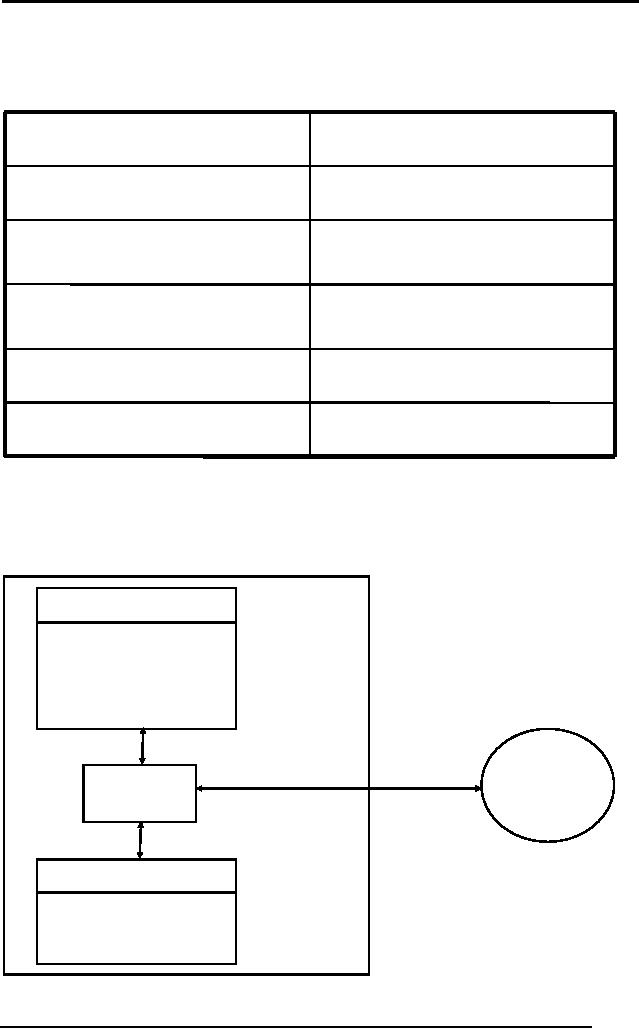
Artificial
Intelligence (CS607)
Solves
the given problem
�
Now, we
are ready to define the
corresponding concepts in an Expert
System.
Human
Expert
Expert
System
Focused
Area of Expertise
Domain
Domain Knowledge (stored
in
Specialized
Knowledge (stored in
LTM)
Knowledge Base)
Case
Facts (stored in STM)
Case/Inferred
Facts (stored in
Working Memory)
Reasoning
Inference
Engine
Solution
Conclusions
We can
view the structure of the ES
and its components as shown in
the figure
below
Expert
System
Working
Memory
Analogy:
STM
-Initial Case
facts
-Inferred
facts
Inference
USER
Engine
Knowledge
Base
Analogy:
LTM
- Domain
knowledge
116

Artificial
Intelligence (CS607)
Figure
13: Expert System
Structure
5.7.1 Knowledge
Base
The knowledge
base is the part of an
expert system that contains
the domain
knowledge,
i.e.
Problem
facts, rules
�
Concepts
�
Relationships
�
As we have
emphasised several times,
the power of an ES lies to a
large extent
in its
richness of knowledge. Therefore, one of
the prime roles of the
expert
system
designer is to act as a knowledge
engineer. As a knowledge
engineer,
the
designer must overcome the
knowledge acquisition bottleneck and
find an
effective way to
get information from the
expert and encode it in the
knowledge
base,
using one of the knowledge
representation techniques we discussed
in
KRR.
As discussed in
the KRR section, one
way of encoding that
knowledge is in the
form of
IF-THEN rules. We saw that
such representation is especially
conducive
to
reasoning.
5.7.2 Working
memory
The working
memory is the `part of the
expert system that contains
the problem
facts
that are discovered during
the session' according to
Durkin. One session
in
the
working memory corresponds to
one consultation. During a
consultation:
User
presents some facts about
the situation.
�
These
are stored in the working
memory.
�
Using
these and the knowledge
stored in the knowledge
base, new
�
information is
inferred and also added to
the working memory.
5.7.3 Inference
Engine
The inference
engine can be viewed as the
processor in an expert system
that
matches
the facts contained in the
working memory with the
domain knowledge
contained in
the knowledge base, to draw
conclusions about the
problem. It
works
with the knowledge base and
the working memory, and
draws on both to
add new
facts to the working
memory.
If the
knowledge of an ES is represented in the
form of IF-THEN rules,
the
Inference
Engine has the following
strategy: Match given facts
in working
memory to
the premises of the rules in
the knowledge base, if match
found, `fire'
the
conclusion of the rule, i.e.
add the conclusion to the
working memory. Do
this
repeatedly,
while new facts can be
added, until you come up
with the desired
conclusion.
117

Artificial
Intelligence (CS607)
We will
illustrate the above
features using examples in
the following
sections
118
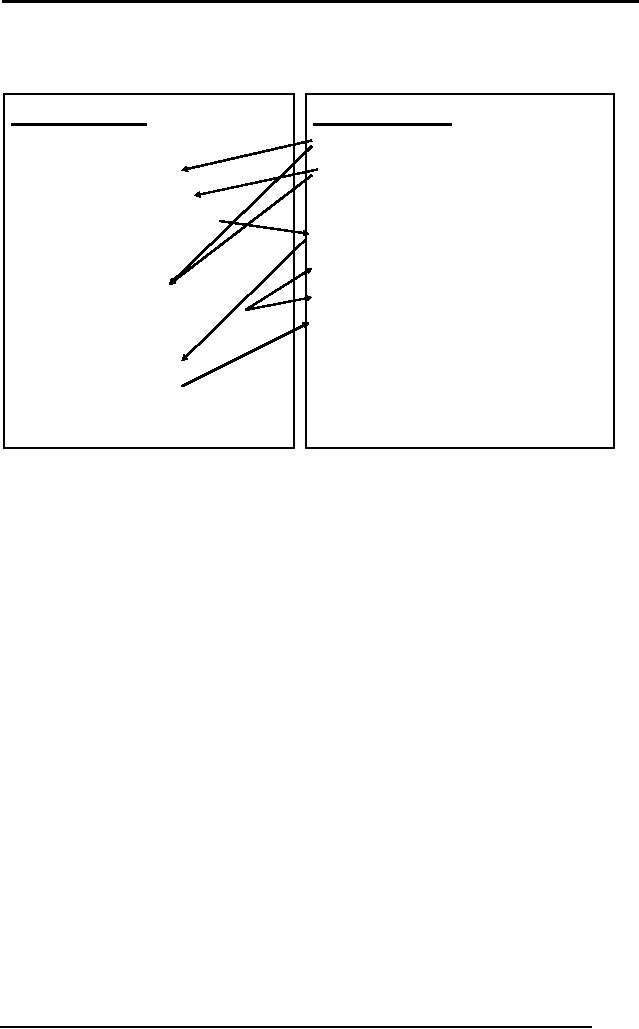
Artificial
Intelligence (CS607)
5.7.4 Expert
System Example: Family
Knowledge
Base
Working
Memory
Rule 1:
father
(M.Tariq, Ali)
IF father
(X, Y)
father
(M.Tariq, Ahmed)
AND father
(X, Z)
THEN brother
(Y, Z)
brother
(Ali, Ahmed)
Rule 2:
payTuition
(M.Tariq, Ali)
IF father
(X, Y)
payTuition
(M.Tariq,Ahmed)
THEN payTuition
(X, Y)
like
(Ali, Ahmed)
Rule 3:
IF brother
(X, Y)
THEN like
(X, Y)
Let's
look at the example above to
see how the knowledge
base and working
memory
are used by the inference
engine to add new facts to
the working
memory. The
knowledge base column on the
left contains the three
rules of the
system. The
working memory starts out
with two initial case
facts:
father
(M.Tariq, Ali)
father
(M.Tariq, Ahmed)
The inference
engine matches each rule in
turn with the rules in
the working
memory to
see if the premises are
all matched. Once all
premises are matched,
the
rule is fired and the
conclusion is added to the
working memory, e.g.
the
premises of
rule 1 match the initial
facts, therefore it fires
and the fact
brother(Ali,
Ahmed is
fired). This matching of
rule premises and facts
continues until no new
facts
can be added to the system.
The matching and firing is
indicated by arrows
in the
above table.
5.7.5 Expert
system example: raining
119
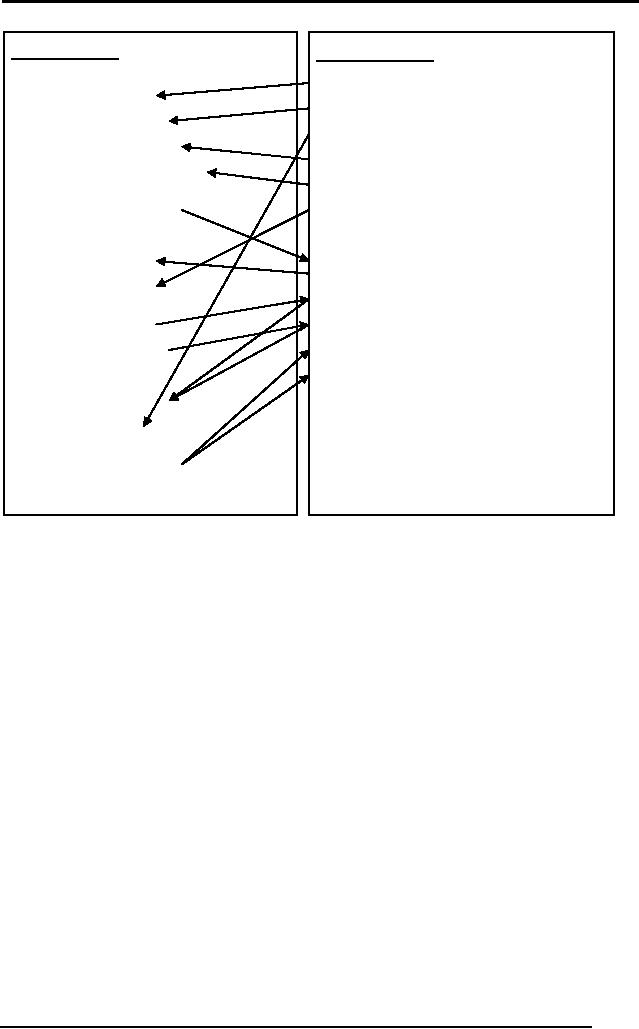
Artificial
Intelligence (CS607)
Working
Memory
Knowledge
Base
Rule
1:
person
(Ali)
IF
person(X)
person
(Ahmed)
AND
person(Y)
cloudy
()
AND
likes (X, Y)
likes(Ali,
Ahmed)
AND
sameSchool(X,Y)
sameSchool(Ali,
Ahmed)
THEN
weekend()
friends(X,
Y)
Rule
2:
IF friends
(X, Y)
friends(Ali,
Ahmed)
AND
weekend()
goToMovies(Ali)
THEN
goToMovies(Ahmed)
goToMovies(X)
carryUmbrella(Ali)
goToMovies(Y)
carryUmbrella(Ahmed)
Rule
3:
IF
goToMovies(X)
AND
cloudy()
THEN
carryUmbrella(X)
5.7.6 Explanation
facility
The explanation
facility is a module of an expert
system that allows
transparency
of operation, by
providing an explanation of how it
reached the conclusion. In
the
family
example above, how does
the expert system draw
the conclusion that
Ali
likes
Ahmed?
The answer to
this is the sequence of
reasoning steps as shown
with the arrows
in the
table below.
120
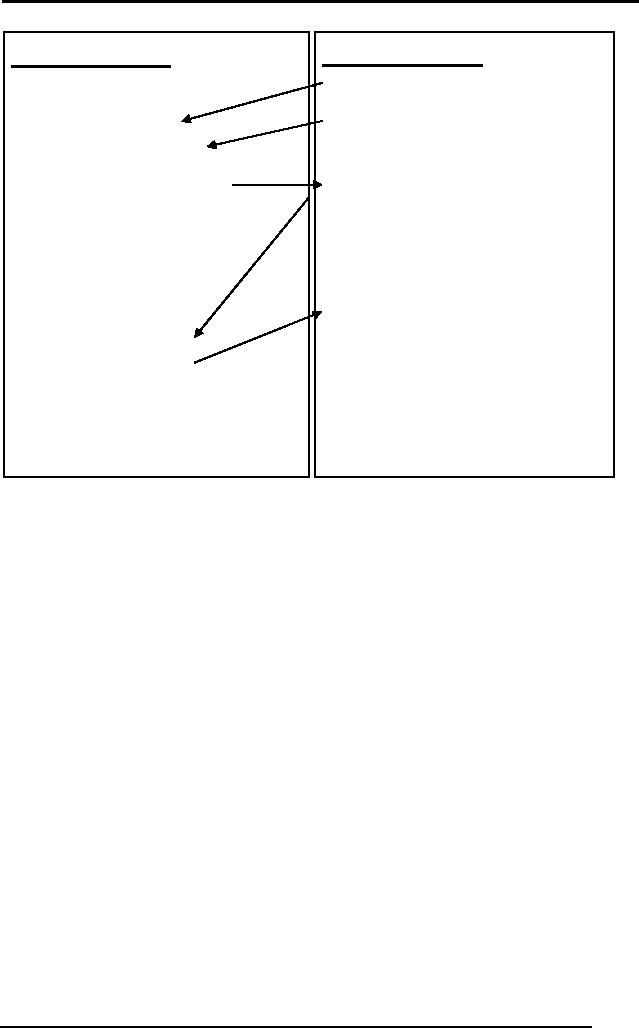
Artificial
Intelligence (CS607)
Working
Memory
Knowledge
Base
father
(M.Tariq, Ali)
Rule
1:
father
(M.Tariq, Ahmed)
IF father
(X, Y)
AND father
(X, Z)
brother
(Ali, Ahmed)
THEN
brother (Y, Z)
payTuition
(M.Tariq, Ali)
Rule
2:
payTuition
(M.Tariq,Ahmed)
IF father
(X, Y)
THEN
payTuition (X, Y)
like (Ali,
Ahmed)
Rule
3:
IF brother
(X, Y)
THEN
like (X, Y)
The arrows
above provide the
explanation for how the fact
like(Ali, Ahmed) was
added to
the working memory.
5.8
Characteristics of expert systems
Having
looked at the basic
operation of expert systems, we
can begin to outline
desirable
properties or characteristics we would
like our expert systems
to
possess.
ES have an
explanation facility. This is
the module of an expert
system that
allows
transparency of operation, by providing
an explanation of how
the
inference
engine reached the
conclusion. We want ES to have
this facility so that
users
can have knowledge of how it
reaches its
conclusion.
An expert
system is different from
conventional programs in the
sense that
program
control and knowledge are
separate. We can change one
while affecting
the
other minimally. This
separation is manifest in ES structure;
knowledge base,
working
memory and inference engine.
Separation of these components
allows
changes to
the knowledge to be independent of
changes in control and
vice
versa.
"There is a
clear separation of general
knowledge about the problem
(the rules
forming
the knowledge base) from
information about the
current problem (the
input
data) and methods for
applying the general
knowledge to a problem
(the
rule
interpreter).The program itself is
only an interpreter (or
general reasoning
121

Artificial
Intelligence (CS607)
mechanism) and
ideally the system can be
changed simply by adding
or
subtracting
rules in the knowledge base"
(Duda)
Besides
these properties, an expert
system also possesses expert
knowledge in
that it
embodies expertise of human
expert. If focuses expertise
because the
larger
the domain, the more
complex the expert system
becomes, e.g. a car
diagnosis
expert is more easily
handled if we make separate ES
components for
engine
problems, electricity problems,
etc. instead of just
designing one
component
for all problems.
We have
also seen that an ES reasons
heuristically, by encoding an
expert's
rules-of-thumb.
Lastly, an expert system,
like a human expert makes
mistakes,
but
that is tolerable if we can
get the expert system to
perform at least as well
as
the
human expert it is trying to
emulate.
5.9 Programming
vs. knowledge engineering
Conventional
programming is a sequential, three
step process: Design,
Code,
Debug.
Knowledge engineering, which is
the process of building an
expert
system,
also involves assessment,
knowledge acquisition, design,
testing,
documentation and
maintenance. However, there
are some key
differences
between
the two programming
paradigms.
Conventional
programming focuses on solution,
while ES programming
focuses
on problem. An ES
is designed on the philosophy
that if we have the
right
knowledge
base, the solution will be
derived from that data
using a generic
reasoning
mechanism.
Unlike
traditional programs, you
don't just program an ES and
consider it `built'. It
grows as you
add new knowledge. Once
framework is made, addition
of
knowledge
dictates growth of
ES.
5.10
People involved in an expert system
project
The main
people involved in an ES development
project are the domain
expert,
the
knowledge engineer and the
end user.
Domain
Expert
A domain
expert is `A person who
posses the skill and
knowledge to solve a
specific
problem in a manner superior to
others' (Durkin). For our
purposes, an
expert
should have expert knowledge
in the given domain, good
communication
skills,
availability and readiness to
co-operate.
Knowledge
Engineer
A knowledge
engineer is `a person who
designs, builds and tests an
Expert
System'
(Durkin). A knowledge engineer
plays a key role in identifying,
acquiring
and encoding
knowledge.
122

Artificial
Intelligence (CS607)
End-user
The end users
are the people who
will use the expert
system. Correctness,
usability
and clarity are important ES
features for an end
user.
5.11
Inference mechanisms
In the
examples we have looked at so
far, we have looked
informally at how the
inference
engine adds new facts to
the working memory. We can
see that many
different
sequences for matching are
possible and that we can
have multiple
strategies
for inferring new
information, depending upon
our goal. If we want
to
look
for a specific fact, it
makes no sense to add all
possible facts to the
working
memory. In
other cases, we might
actually need to know all
possible facts about
the
situation. Guided by this
intuition, we have two
formal inference
mechanisms;
forward and
backward chaining.
5.11.1
Forward
Chaining
Let's
look at how a doctor goes
about diagnosing a patient. He
asks the patient
for
symptoms and then infers
diagnosis from symptoms.
Forward chaining is
based on
the same idea. It is an
"inference strategy that
begins with a set of
known
facts, derives new facts
using rules whose premises
match the known
facts,
and continues this process
until a goal sate is reached
or until no further
rules
have premises that match
the known or derived facts"
(Durkin). As you will
come to
appreciate shortly, it is a data-driven
approach.
Approach
1. Add facts to
working memory (WM)
2. Take
each rule in turn and
check to see if any of its
premises match the
facts in
the WM
3. When
matches found for all
premises of a rule, place
the conclusion of the
rule in
WM.
4. Repeat
this process until no more
facts can be added. Each
repetition of
the
process is called a
pass.
We will
demonstrate forward chaining
using an example.
Doctor example
(forward chaining)
Rules
Rule
1
IF
The patient
has deep cough
AND
We suspect an
infection
THEN
The patient
has Pneumonia
Rule
2
IF
The patient's
temperature is above
100
THEN
Patient
has fever
123
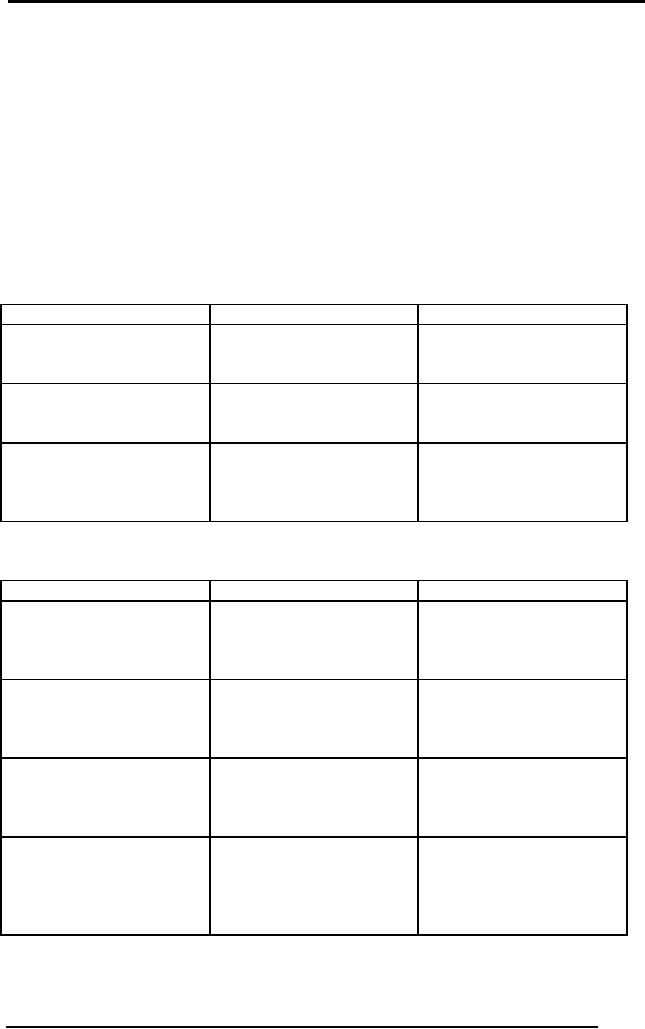
Artificial
Intelligence (CS607)
Rule
3
IF
The patient
has been sick for
over a fortnight
AND
The patient
has a fever
THEN
We suspect an
infection
Case
facts
Patients
temperature= 103
�
Patient
has been sick for
over a month
�
Patient
has violent coughing
fits
�
First
Pass
Rule,
premise
Status
Working
Memory
1, 1
True
Temp=
103
Deep
cough
Sick
for a month
Coughing
fits
1, 2
Unknown
Temp=
103
Suspect
infection
Sick
for a month
Coughing
fits
2, 1
True,
fire rule
Temp=
103
Temperature>100
Sick
for a month
Coughing
fits
Patient
has fever
Second
Pass
Rule,
premise
Status
Working
Memory
1, 1
True
Temp=
103
Sick
for a month
Deep
cough
Coughing
fits
Patient
has fever
1, 2
Unknown
Temp=
103
Suspect
infection
Sick
for a month
Coughing
fits
Patient
has fever
3, 1
True
Temp=
103
Sick
for over fortnight
Sick
for a month
Coughing
fits
Patient
has fever
3, 2
True,
fire
Temp=
103
Patient
has fever
Sick
for a month
Coughing
fits
Patient
has fever
Infection
Third
Pass
124

Artificial
Intelligence (CS607)
Rule, premise
Status
Working
Memory
1, 1
True
Temp=
103
Sick
for a month
Deep
cough
Coughing
fits
Patient
has fever
Infection
1, 2
True,
fire
Temp=
103
Suspect
infection
Sick
for a month
Coughing
fits
Patient
has fever
Infection
Pneumonia
Now, no
more facts can be added to
the WM. Diagnosis: Patient
has Pneumonia.
Issues in forward
chaining
Undirected
search
There is an
important observation to be made
about forward chaining.
The
forward
chaining inference engine
infers all possible facts
from the given facts.
It
has no way of
distinguishing between important
and unimportant facts.
Therefore,
equal
time spent on trivial
evidence as well as crucial
facts. This is draw back
of
this
approach and we will see in
the coming section how to
overcome this.
Conflict
resolution
Another
important issue is conflict
resolution. This is
the question of what to
do
when
the premises of two rules
match the given facts.
Which should be fired
first? If we
fire both, they may add
conflicting facts,
e.g.
IF you
are bored
AND you
have no cash
THEN go to a
friend's place
IF you
are bored
AND you
have a credit card
THEN go watch a
movie
If both
rules are fired, you
will add conflicting recommendations to
the working
memory.
Conflict
resolution strategies
To overcome
the conflict problem stated
above, we may choose to use
on of the
following
conflict resolution
strategies:
Fire
first rule in sequence (rule
ordering in list). Using
this strategy all
the
�
rules in
the list are ordered
(the ordering imposes
prioritization). When
more
than one rule matches, we
simply fire the first in
the sequence
125

Artificial
Intelligence (CS607)
Assign
rule priorities (rule
ordering by importance). Using
this approach we
�
assign
explicit priorities to rules to
allow conflict
resolution.
More specific
rules (more premises) are
preferred over general
rules. This
�
strategy is
based on the observation
that a rule with more
premises, in a
sense,
more evidence or votes from
its premises, therefore it
should be
fired in
preference to a rule that
has less premises.
Prefer
rules whose premises were
added more recently to WM
(time-
�
stamping).
This allows prioritizing
recently added facts over
older facts.
Parallel
Strategy (view-points). Using
this strategy, we do not
actually
�
resolve
the conflict by selecting
one rule to fire. Instead,
we branch out our
execution
into a tree, with each
branch operation in parallel on
multiple
threads of
reasoning. This allows us to
maintain multiple view-points
on
the
argument concurrently
5.11.2
Backward
chaining
Backward
chaining is an inference strategy
that works backward from
a
hypothesis to a
proof. You begin with a
hypothesis about what the
situation might
be.
Then you prove it using
given facts, e.g. a doctor
may suspect some
disease
and proceed by
inspection of symptoms. In backward
chaining terminology,
the
hypothesis to
prove is called the
goal.
Approach
1. Start
with the goal.
2. Goal may be in
WM initially, so check and you
are done if found!
3. If not,
then search for goal in
the THEN part of the rules
(match
conclusions,
rather than premises). This
type of rule is called goal
rule.
4. Check to
see if the goal rule's
premises are listed in the
working memory.
5. Premises
not listed become sub-goals
to
prove.
6. Process
continues in a recursive
fashion
until a premise is found
that is
not
supported by a rule, i.e. a
premise is called a primitive, if it cannot
be
concluded by
any rule
7. When a
primitive is found, ask user
for information about it.
Back track and
use
this information to prove
sub-goals and subsequently the
goal.
As you
look at the example for
backward chaining below,
notice how the
approach of
backward chaining is like
depth first search.
Backward chaining
example
Consider
the same example of doctor
and patient that we looked
at previously
Rules
126
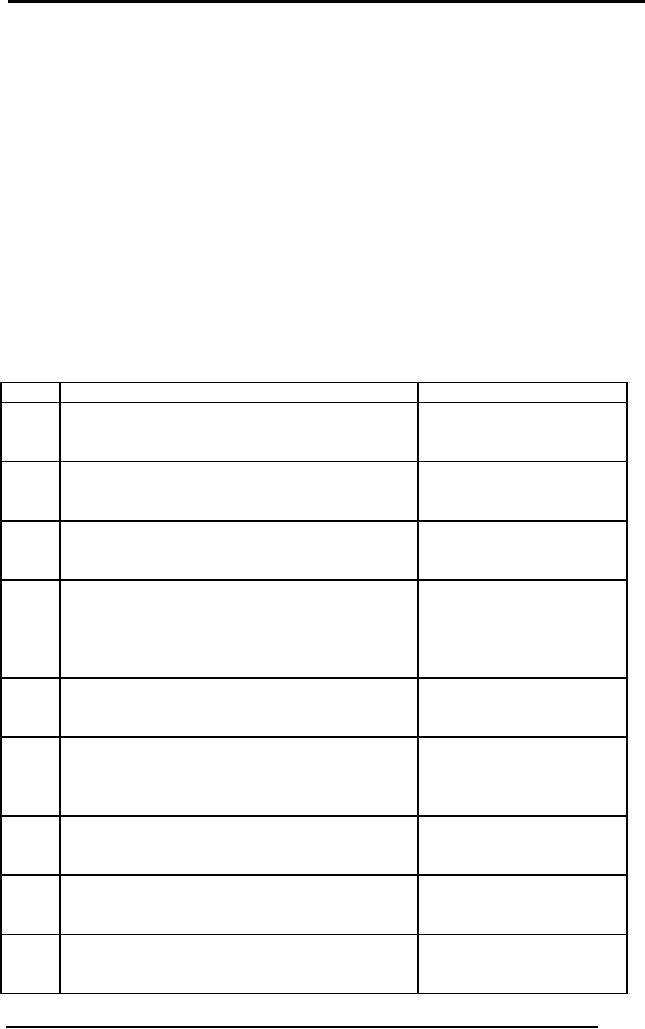
Artificial
Intelligence (CS607)
Rule
1
IF
The
patient has deep
cough
AND
We suspect an
infection
THEN
The
patient has Pneumonia
Rule
2
IF
The
patient's temperature is above
100
THEN
Patient
has fever
Rule
3
IF
The
patient has been sick
for over a fortnight
AND
The
patient has fever
THEN
We suspect an
infection
Goal
Patient
has Pneumonia
Step
Description
Working
Memory
1
Goal:
Patient has pneumonia. Not in
working
memory
2
Find
rules with goal in
conclusion:
Rule
1
3
See if
rule 1, premise 1 is known,
"the patient
has a
deep cough
4
Find
rules with this statement in
conclusion. Deep
cough
No rule
found. "The patient has a
deep
cough" is
a primitive. Prompt
patient.
Response:
Yes.
5
See if
rule 1, premise 2 is known,
"We Deep cough
suspect an
infection"
6
This is in
conclusion of rule 3. See if rule 3,
Deep cough
premise 1 is
known, "The patient has
been
sick
for over a fortnight"
7
This is a
primitive. Prompt patient.
Response: Deep cough
Yes
Sick
over a month
8
See if
rule 3, premise 2 is known,
"The Deep cough
patient
has a fever"
Sick
over a month
9
This is
conclusion of rule 2. See if rule 2,
Deep cough
premise 1
is known, "Then
patients Sick over a
month
temperature is
above 100"
127
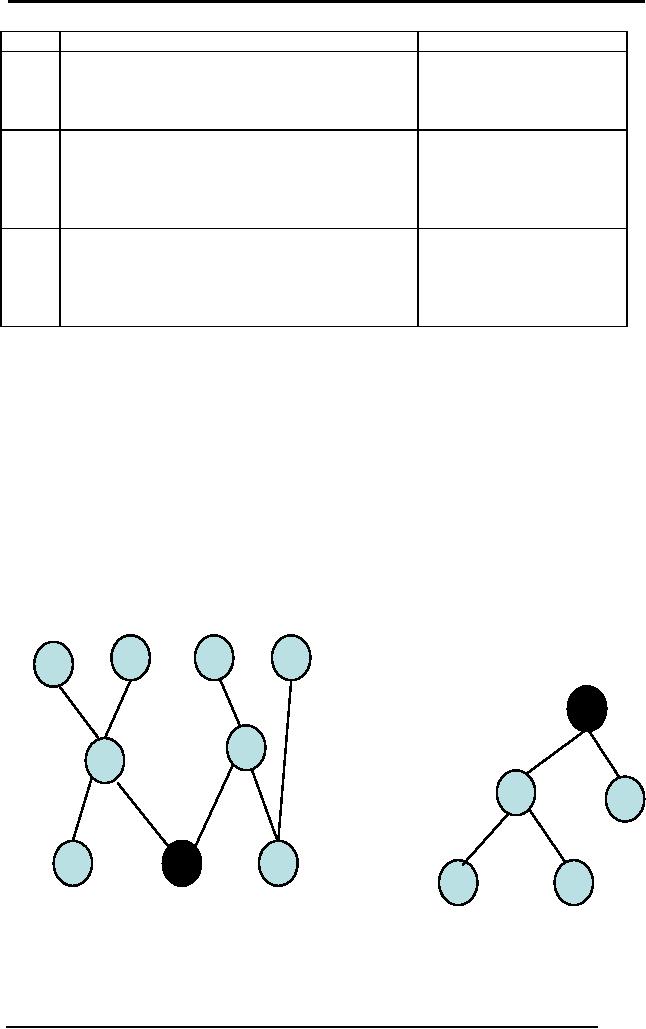
Artificial
Intelligence (CS607)
10
This is a
primitive. Prompt patient.
Response: Deep cough
Yes.
Fire Rule
Sick
over a month
Fever
11
Rule 3
fires
Deep
cough
Sick
over a month
Fever
Infection
12
Rule 1
fires
Deep
cough
Sick
over a month
Fever
Infection
Pneumonia
5.11.3
Forward vs. backward
chaining
The exploration of
knowledge has different
mechanisms in forward and
backward
chaining.
Backward chaining is more
focused and tries to avoid
exploring
unnecessary
paths of reasoning. Forward
chaining, on the other hand
is like an
exhaustive
search.
In the
figures below, each node
represents a statement. Forward
chaining starts
with
several facts in the working
memory. It uses rules to
generate more facts.
In
the
end, several facts have
been added, amongst which
one or more may be
relevant.
Backward chaining however,
starts with the goal
state and tries to
reach
down to
all primitive nodes (marked
by `?'), where information is
sought from the
user.
?
?
?
Figure:
Forward chaining
Figure:
Backward Chaining
128
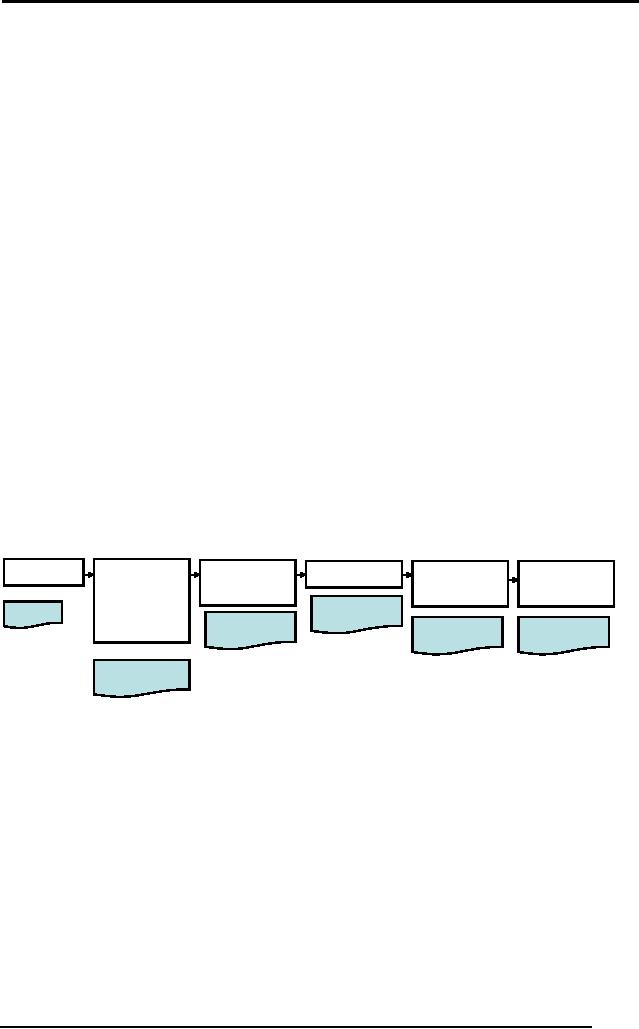
Artificial
Intelligence (CS607)
5.12
Design of expert systems
We will now
look at software engineering
methodology for developing
practical
ES.
The general stages of the
expert system development
lifecycle or ESDLC
are
Feasibility
study
�
Rapid
prototyping
�
Alpha
system (in-house
verification)
�
Beta
system (tested by
users)
�
Maintenance
and evolution
�
Linear
model
The Linear
model (Bochsler 88) of
software development has
been successfully
used in
developing expert systems. A
linear sequence of steps is
applied
repeatedly in an
iterative fashion to develop
the ES. The main phases of
the
linear
sequence are
Planning
�
Knowledge
acquisition and analysis
�
Knowledge
design
�
Code
�
Knowledge
verification
�
System
evaluation
�
Planning
Knowledge
Knowledge
Code
Knowledge
System
Acquisition
Design
Verification
Evaluation
Encoding of
knowledge
and
Work
Using a
development
tool
Design
Plan
Analysis
Product
evaluation by
Formal
in-house testing
Baseline
users
Knowledge
Baseline
Figure:
Linear Model for ES
development
5.12.1
Planning
phase
This
phase involves the following
steps
Feasibility
assessment
�
Resource
allocation
�
Task
phasing and scheduling
�
Requirements
analysis
�
5.12.2
Knowledge
acquisition
129

Artificial
Intelligence (CS607)
This is
the most important stage in
the development of ES.
During this stage
the
knowledge
engineer works with the
domain expert to acquire,
organize and
analyze
the domain knowledge for
the ES. `Knowledge
acquisition is the
bottleneck in
the construction of expert
systems' (Hayes-Roth et al.). The
main
steps in
this phase are
Knowledge
acquisition from
expert
�
Define
knowledge acquisition strategy
(consider various
options)
�
Identify
concrete knowledge
elements
�
Group and
classify knowledge. Develop
hierarchical representation
where
�
possible.
Identify
knowledge source, i.e.
expert in the domain
�
o Identify
potential sources (human
expert, expert
handbooks/
manuals),
e.g. car mechanic expert
system's knowledge
engineer
may chose a
mix of interviewing an expert
mechanic and using a
mechanics
trouble-shooting manual.
Tip:
Limit the number of
knowledge sources (experts)
for simple
domains to
avoid scheduling and view
conflicts. However, a
single
expert
approach may only be applicable to
restricted small
domains.
o Rank by
importance
o Rank by
availability
o Select
expert/panel of experts
o If more
than one expert has to be
consulted, consider a
blackboard
system,
where more than one
knowledge source (kept
partitioned),
interact
through an interface called a
Blackboard
5.12.3
Knowledge acquisition
techniques
Knowledge
elicitation by interview
�
Brainstorming
session with one or more
experts. Try to introduce
some
�
structure to
this session by defining the
problem at hand, prompting
for
ideas and
looking for converging lines
of thought.
Electronic
brainstorming
�
On-site
observation
�
Documented
organizational expertise, e.g.
troubleshooting manuals
�
5.12.4
Knowledge
elicitation
Getting
knowledge from the expert is
called knowledge
elicitation vs. the
broader
term knowledge
acquisition. Elicitation
methods may be broadly divided
into:
Direct
Methods
�
o Interviews
Very
good at initial
stages
Reach a
balance between structured
(multiple choice,
rating
scale)
and un-structured
interviewing.
Record
interviews (transcribe or
tape)
Mix of open and
close ended questions
130
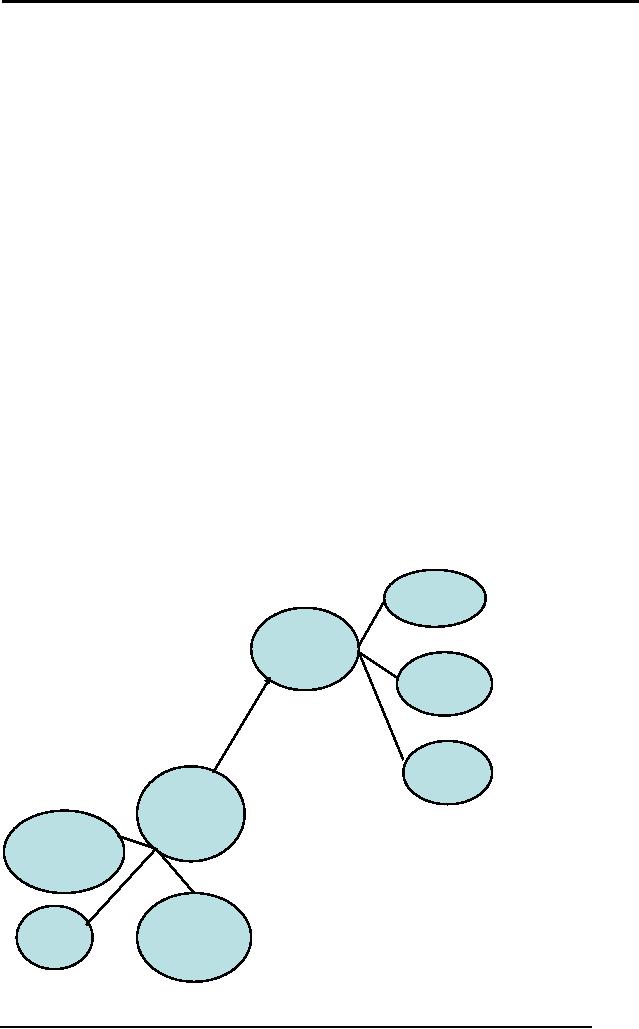
Artificial
Intelligence (CS607)
o Informal
discussions (gently control
digression, but do not
offend
expert by
frequent interruption)
Indirect
methods
�
o Questionnaire
Problems
that may be faced and have to be
overcome during elicitation
include
Expert may
not be able to effectively
articulate his/her
knowledge.
�
Expert may
not provide relevant
information.
�
Expert may
provide incomplete
knowledge
�
Expert may
provide inconsistent or incorrect
knowledge
�
5.12.5
Knowledge
analysis
The goal of
knowledge analysis is to analyze and
structure the knowledge
gained
during
the knowledge acquisition
phase. The key steps to be followed
during this
stage
are
Identify
specific knowledge elements, at
the level of concepts,
entities, etc.
�
From
the notes taken during
the interview sessions,
extract specific
�
o Identify
strategies (as a list of
points)
o Translate
strategies to rules
o Identify
heuristics
o Identify
concepts
o Represent
concepts and their
relationships using some
visual
mechanism
like cognitive maps
Age
Patient
Medical
History
Gets
Personal
History
Tests
Echo
Cardiogram
Blood
Blood
Hematology
Sugar
131
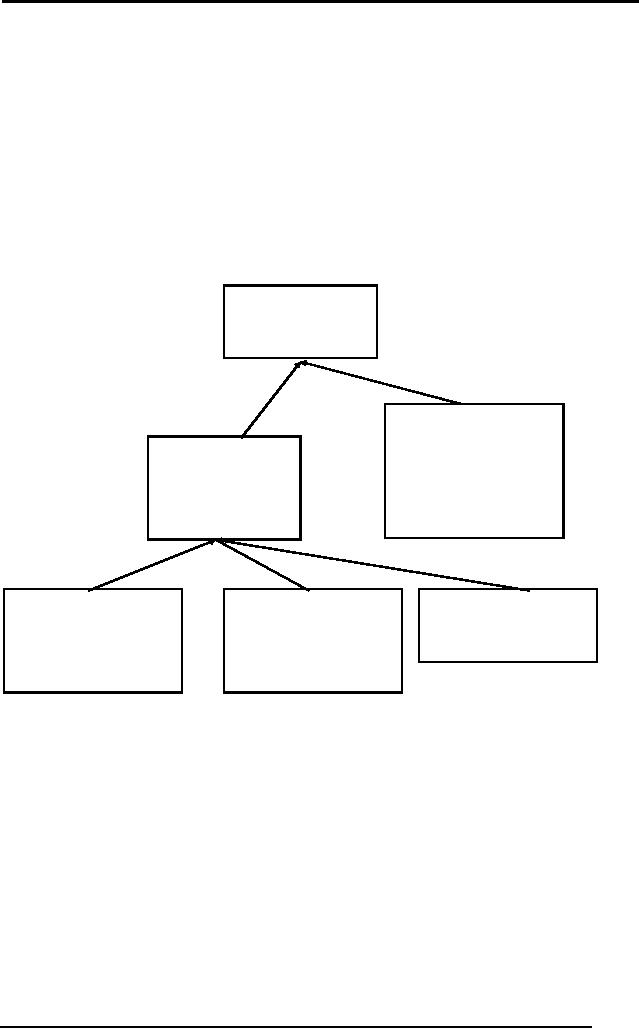
Artificial
Intelligence (CS607)
Figure:
Cognitive Map example
The example
cognitive map for the
domain of medicine shows
entities and their
relationships.
Concepts and sub-concepts are
identified and grouped together
to
understand
the structure of the
knowledge better. Cognitive
maps are usually
used to
represent static
entities.
Inference
networks
Inference
networks encode the
knowledge of rules and
strategies.
Diagnosis
is
Anemia
AND
Blood
test shows
low
hemoglobin
Symptoms
level
indicate
anemia
OR
OR
Feeling
Listless
Inner
surface of
Consistent
Low
eyes
lids pale
Blood
Pressure
Figure:
Inference Network
Example
Flowcharts
Flow
charts also capture
knowledge of strategies. They may be
used to represent
a sequence of
steps that depict the
order of application of rule
sets. Try making a
flow
chart that depicts the
following strategy. The doctor
begins by asking
symptoms. If
they are not indicative of
some disease the doctor
will not ask
for
specific
tests. If it is symptomatic of two or
three potential diseases,
the doctor
decides
which disease to check for
first and rules out
potential diagnoses in
some
heuristic
sequence.
132

Artificial
Intelligence (CS607)
5.12.6
Knowledge
design
After
knowledge analysis is done, we
enter the knowledge design
phase. At the
end of this
phase, we have
Knowledge
definition
�
Detailed
design
�
Decision of
how to represent
knowledge
�
o Rules
and Logic
o Frames
Decision of a
development tool. Consider
whether it supports your
planned
�
strategy.
Internal
fact structure
�
Mock
interface
�
5.12.7
Code
This
phase occupies the least
time in the ESDLC. It
involves coding,
preparing
test
cases, commenting code,
developing user's manual and
installation guide. At
the end of
this phase the system is
ready to be tested.
5.12.8
CLIPS
We will
now look at a tool for
expert system development.
CLIPS stands for C
Language
Integrated Production System.
CLIPS is an expert system
tool which
provides a
complete environment for the
construction of rule and
object based
expert
systems.Download CLIPS
for windows
(CLIPSWin.zip) from:
http://www.ghg.net/clips/download/executables/pc/.
Also download the
complete
documentation
including
the
programming
guide
from:
http://www.ghg.net/clips/download/documentation/
The guides
that you download will
provide comprehensive guidance
on
programming
using CLIP. Here are
some of the basics to get
you started
Entering and
Exiting CLIPS
When
you start executable, you
will see prompt
CLIPS>
Commands
can be entered here
To leave
CLIPS, enter
(exit)
All
commands use ( ) as delimiters,
i.e. all commands are
enclosed in brackets.
A simple
command example for adding
numbers
CLIPS> (+ 3
4)
Fields
133

Artificial
Intelligence (CS607)
Fields
are the main types of
fields/tokens that can be
used with clips. They
can
be:
Numeric
fields: consist of sign,
value and exponent
�
o Float
.e.g. 3.5e-10
o Integer
e.g. -1 , 3
Symbol:
ASCII characters, ends with
delimiter. e.g.
family
�
String:
Begins and ends with double
quotation marks, "Ali is
Ahmed's
�
brother"
Remember
that CLIPS is case
sensitive
The Deftemplate
construct
Before
facts can be added, we have
to define the format for
our relations.Each
relation
consists of: relation name,
zero or more slots
(arguments of the
relation)
The Deftemplate
construct defines a relation's
structure
(deftemplate
<relation-name> [<optional
comment>]
<slot-definition>
e.g.
CLIPS> (
deftemplate father "Relation
father"
(slot
fathersName)
(slot
sonsName) )
Adding
facts
Facts
are added in the predicate
format. The deftemplate construct is
used to
inform
CLIPS of the structure of
facts. The set of all
known facts is called the
fact
list. To add
facts to the fact list,
use the assert command,
e.g.
Facts to
add:
man(ahmed)
father(ahmed,
belal)
brother(ahmed,
chand)
CLIPS>
(assert ( man ( name "Ahmed"
) ) )
CLIPS>(assert (
father ( fathersName "Ahmed")
(sonsName "Belal") ) )
Viewing fact
list
After
adding facts, you can see
the fact list using
command: (facts). You will
see
that a
fact index is assigned to
each fact, starting with 0.
For long fact lists,
use
the
format
(facts
[<start> [<end>]])
For
example:
(facts 1
10) lists fact numbers 1
through 10
Removing
facts
The retract
command is used to remove or
retract facts. For
example:
(retract 1)
removes fact 1
134

Artificial
Intelligence (CS607)
(retract 1 3)
removes fact 1 and 3
Modifying and duplicating
facts
We add a
fact:
CLIPS>(assert (
father ( fathersName "Ahmed")
(sonsName "Belal") ) )
To modify
the fathers name slot,
enter the following:
CLIPS>
(modify 2 ( fathersName "Ali
Ahmed"))
Notice
that a new index is assigned
to the modified fact
To duplicate a
fact, enter:
CLIPS>
(duplicate 2 (name "name")
)
The WATCH
command
The WATCH command
is used for debugging
programs. It is used to view
the
assertion and
modification of facts. The
command is
CLIPS>
(watch facts)
After
entering this command, for
subsequent commands, the
whole sequence of
events
will be shown. To turn off
this option, use:
(unwatch
facts)
The DEFFACTS
construct
These
are a set of facts that
are automatically asserted
when the (reset)
command is
used, to set the working
memory to its initial state.
For example:
CLIPS>
(deffacts myFacts "My known
facts
( man (
name "Ahmed" ) )
(father
(fathersName"Ahmed")
(sonsName
"Belal") ) )
The Components of a
rule
The Defrule
construct is used to add
rules. Before using a rule
the component
facts
need to be defined. For
example, if we have the
rule
IF Ali is
Ahmed's father
THEN Ahmed is
Ali's son
We enter
this into CLIPS using
the following
construct:
;Rule
header
(defrule
isSon "An example
rule"
135

Artificial
Intelligence (CS607)
;
Patterns
(father
(fathersName "ali") (sonsName
"ahmed")
;THEN
=>
;Actions
(assert
(son (sonsName "ahmed")
(fathersName "ali")))
)
CLIPS
attempts to match the
pattern of the rules against
the facts in the fact
list.
If all
patterns of a rule match,
the rule is activated, i.e.
placed on the agenda.
Agenda driven control and
execution
The agenda
is
the list of activated rules.
We use the run command to
run the
agenda.
Running the agenda causes
the rules in the agenda to
be fired.
CLIPS>(run)
Displaying the
agenda
To display
the set of rules on the
agenda, enter the
command
(agenda)
Watching
activations and rules
You can
watch activations in the
agenda by entering
(watch
activations)
You can
watch rules firing
using
(watch
rules)
All
subsequent activations and firings
will be shown until you turn
the watch off
using
the unwatch command.
Clearing all
constructs
(clear)
clears the working
memory
The PRINTOUT
command
Instead of
asserting facts in a rule, you
can print out messages
using
(printout t
"Ali is Ahmed's son"
crlf)
The SET-BREAK
command
This is a
debugging command that
allows execution of an agenda to
halt at a
specified
rule (breakpoint)
(set-break
isSon)
Once
execution stops, run is used
to resume it again.
136

Artificial
Intelligence (CS607)
(remove-break
isSon) is used to remove the
specified breakpoint.
Use
(show-breaks) to view all
breakpoints.
Loading and saving
constructs
Commands
cannot be loaded from a
file; they have to be
entered at the
command
prompt. However constructs
like deftemplate, deffacts and
defrules
can be
loaded from a file that
has been saved using
.clp extension. The
command to
load the file
is:
(load
"filename.clp")
You can
write out constructs in file
editor, save and load. Also
(save
"filename.clp")
saves all constructs
currently loaded in CLIPS to
the specified file.
Pattern
matching
Variables in
CLIPS are preceded by ?,
e.g.
?speed
?name
Variables
are used on left hand
side of a rule. They are
bound to different
values
and once
bound may be referenced on the
right hand side of a rule.
Multi-field
wildcard
variables may be bound to one or more
field of a pattern. They
are
preceded by $?
e.g. $?name will match to
entire name(last, middle and
first)
Below
are some examples to help
you see the above concept in
practice:
Example 1
;This is a
comment, anything after a
semicolon is a comment
;Define
initial facts
(deffacts
startup (animal dog) (animal
cat) (animal duck) (animal
turtle)(animal horse)
(warm-
blooded
dog) (warm-blooded cat)
(warm-blooded duck) (lays-eggs
duck) (lays-eggs turtle)
(child-
of dog
puppy) (child-of cat kitten)
(child-of turtle
hatchling))
;Define a
rule that prints animal
names
(defrule
animal (animal ?x) =>
(printout t "animal found: " ?x
crlf))
;Define a
rule that identifies
mammals
(defrule
mammal
(animal
?name)
(warm-blooded
?name)
(not
(lays-eggs ?name))
=>
(assert
(mammal ?name))
(printout t
?name " is a mammal"
crlf))
;Define a
rule that adds
mammals
(defrule
mammal2
(mammal
?name)
(child-of
?name ?young)
=>
(assert
(mammal ?young))
(printout t
?young " is a mammal"
crlf))
137

Artificial
Intelligence (CS607)
;Define a
rule that removes mammals
from fact list
;(defrule
remove-mammals
; ?fact <-
(mammal ?)
; =>
; (printout t
"retracting " ?fact
crlf)
; (retract
?fact))
;
;Define
rule that adds child's
name after asking
user
(defrule
what-is-child
(animal
?name)
(not
(child-of ?name ?))
=>
(printout t
"What do you call the
child of a " ?name
"?")
(assert
(child-of ?name
(read))))
Example 2
;OR
example
;note:
CLIPS operators use prefix
notation
(deffacts
startup (weather
raining))
(defrule
take-umbrella
(or
(weather raining)
(weather
snowing))
=>
(assert
(umbrella required)))
These
two are very basic
examples. You will find many
examples in the CLIPS
documentation
that you download. Try out
these examples.
Below is
the code for the
case study we discussed in
the lectures, for
the
automobile
diagnosis problem discussion
that is given in Durkin's
book. This is an
implementation of
the solution. (The solution
is presented by Durkin as rules
in
your
book).
;Helper
functions for asking user
questions
(deffunction
ask-question (?question
$?allowed-values)
(printout t
?question)
(bind
?answer (readline))
(while
(and (not (member ?answer
?allowed-values)) (not(eq ?answer
"q"))) do
(printout t
?question)
(bind
?answer (readline)))
(if
(eq ?answer "q")
then
(clear))
?answer)
(deffunction
yes-or-no-p (?question)
(bind
?response (ask-question ?question
"yes" "no" "y" "n"))
(if
(or (eq ?response "yes")
(eq ?response "y"))
then
TRUE
else
FALSE))
;startup
rule
138

Artificial
Intelligence (CS607)
(deffacts
startup (task begin))
(defrule
startDiagnosis
?fact <-
(task begin)
=>
(retract
?fact)
(assert
(task test_cranking_system))
(printout t
"Auto Diagnostic Expert
System" crlf)
)
;---------------------------------
;Test
Display Rules
;---------------------------------
(defrule
testTheCrankingSystem
?fact <-
(task test_cranking_system)
=>
(printout t
"Cranking System Test"
crlf)
(printout t
"--------------------" crlf)
(printout t "I
want to first check out
the major components of the
cranking system. This
includes
such items as the battery,
cables, ignition switch and
starter. Usually, when a car
does
not
start the problem can be
found with one of
these components"
crlf)
(printout t
"Steps: Please turn on the
ignition switch to energize
the starting motor"
crlf)
(bind
?response
(ask-question
"How does your engine
turn: (slowly or not at
all/normal)? "
"slowly or
not at all" "normal")
)
(assert(engine_turns
?response))
)
(defrule
testTheBatteryConnection
?fact <-
(task test_battery_connection)
=>
(printout t
"Battery Connection Test"
crlf)
(printout t
"-----------------------" crlf)
(printout t "I
next want to see if the
battery connections are
good. Often, a bad
connection
will
appear like a bad battery"
crlf)
(printout t
"Steps: Insert a screwdriver
between the battery post
and the cable
clamp.
Then
turn the headlights on high
beam and observe the
lights as the screwdriver is
twisted." crlf)
(bind
?response
(ask-question
"What happens to the lights:
(brighten/don't brighten/not on)?
"
"brighten"
"don't brighten" "not on")
)
(assert(screwdriver_test_shows_that_lights
?response))
)
(defrule
testTheBattery
?fact <-
(task test_battery)
=>
(printout t
"Battery Test" crlf)
(printout t
"------------" crlf)
(printout t
"The state of the battery
can be checked with a
hydrometer. This is a good
test
to determine
the amount of charge in the
battery and is better than a
simple voltage
measurement"
crlf)
(printout t
"Steps: Please test each
battery cell with the
hydrometer and note each
cell's
specific
gravity reading."
crlf)
(bind
?response
(ask-question
"Do all cells have a
reading above 1.2: (yes/no)?
"
"yes"
"no" "y" "n") )
(assert(battery_hydrometer_reading_good
?response))
)
(defrule
testTheStartingSystem
139

Artificial
Intelligence (CS607)
?fact <-
(task test_starting_system)
=>
(printout t
"Starting System Test"
crlf)
(printout t
"--------------------" crlf)
(printout t
"Since the battery looks
good, I want to next test
the starter and solenoid"
crlf)
(printout t
"Steps: Please connect a
jumper from the battery
post of the solenoid to
the
starter
post of hte solenoid. Then
turn the ignition key."
crlf)
(bind
?response
(ask-question
"What happens after you
make this connection and
turn the key:
(engine
turns normally/starter buzzes/engine
turns slowly/nothing)? "
"engine
turns normally" "starter
buzzes" "engine turns
slowly" "nothing" ))
(assert(starter
?response))
)
(defrule
testTheStarterOnBench
?fact <-
(task test_starter_on_bench)
=>
(bind
?response
(ask-question
"Check your starter on
bench: (meets specifications/doesn't
meet
specifications)?
"
"meets
specifications" "doesn't meet
specifications") )
(assert(starter_on_bench
?response))
)
(defrule
testTheIgnitionOverrideSwitch
?fact <-
(task
test_ignition_override_switches)
=>
(bind
?response